Now I can show the entire process, step-by-step, for how the Spinosaurus painting came to be, from preliminary sketch to the finished artwork. A scan of the painting is at the end.
Hope you enjoy the pictures!
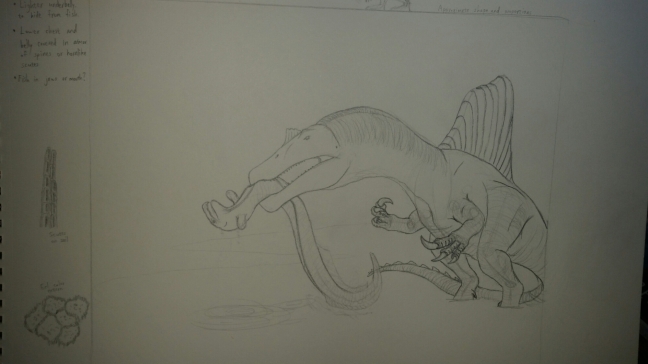
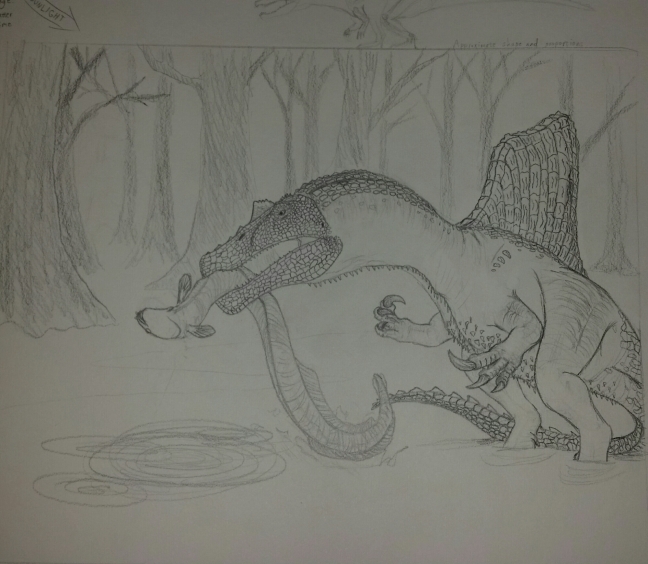
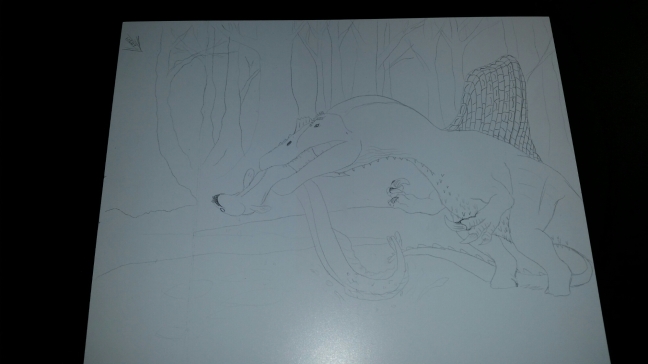
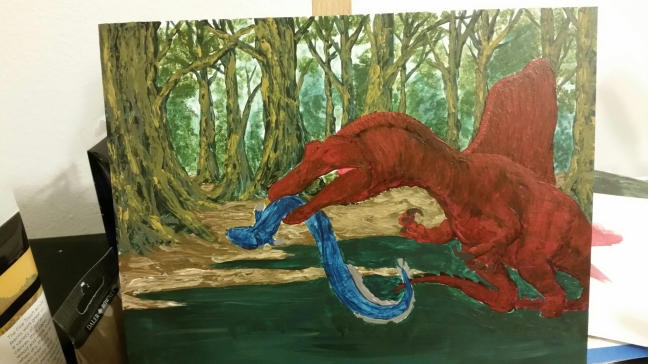
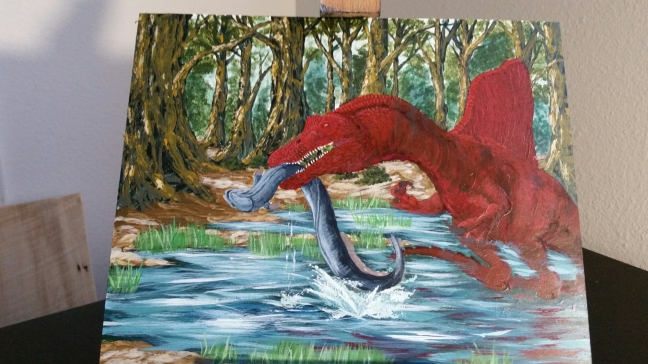

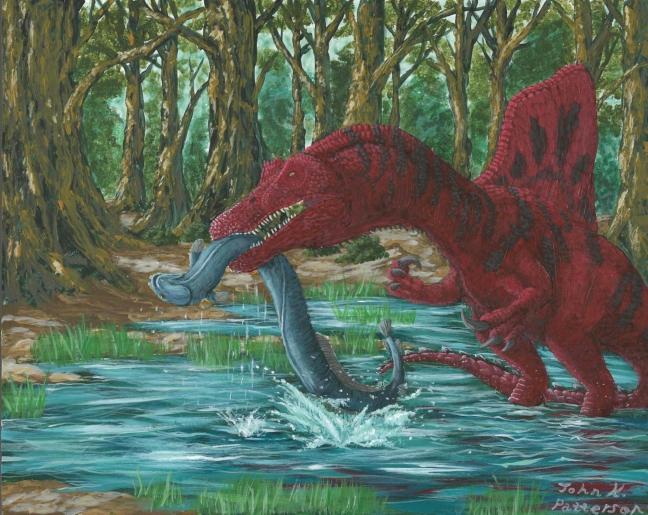
Now I can show the entire process, step-by-step, for how the Spinosaurus painting came to be, from preliminary sketch to the finished artwork. A scan of the painting is at the end.
Hope you enjoy the pictures!








And the winning entry for Astounding Science News of the Week is: Tyrannosaurus evidently didn’t just eat Triceratops, but ripped its armored head off to get at the juicy neck meat underneath.
Museum of the Rockies paleontologist Denver Fowler led an examination of Triceratops remains from Montana’s Hell Creek formation, noting the strange T. rex bite marks on the herbivore’s bony neck frill. Strange because there isn’t much meat on that frill (so why would a Rex be chomping on it?), and because the frill marks didn’t have any signs of healing (showing that they were inflicted after the animal was killed). Equally strange are similar bite marks on the ball-and-socket joint where the skull connected with the neck vertebrae.

